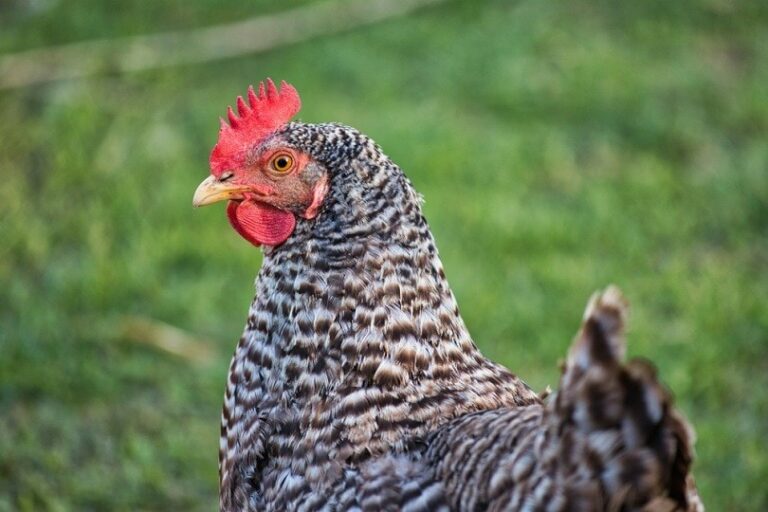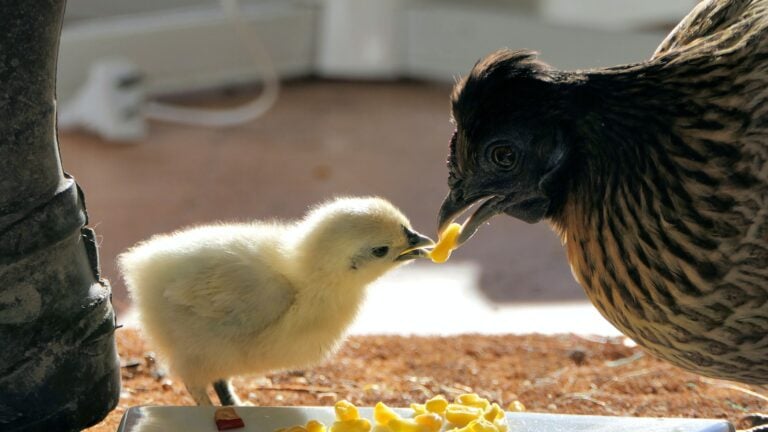The Sussex chicken has roots that plunge deep into English history, even predating the first-ever poultry show in London in 1845. Originating from Sussex County in England, these birds are believed to have existed since the Roman invasion of 43 A.D. Although initially a rustic breed, they underwent significant transformation during the Victorian era—a period marked by ‘hen fever’ in England.
Local Sussex fowls were crossbred with Cochin, Dorking, and Brahma chickens, shaping them into the robust, well-proportioned birds we recognize today. The rise of the broiler industry in the mid-20th century cast a temporary shadow over the Sussex, but it has nonetheless endured due to its dedicated fan base, mainly among traditionalists.
Characteristics and Appearance
| Characteristic | Information |
|---|---|
| Origin | United Kingdom |
| Lifespan | 5-8 years |
| Friendly for beginners? | Yes |
| Primary Use | Dual-Purpose (Egg Laying, Meat) |
| Weight (Female) | 7-8 lbs |
| Weight (Male) | 9-12 lbs |
| Egg Color | Brown |
| Egg Size | Large |
| Eggs Per Year | 250-275 |
| Temperament | Calm, Friendly |
| Broodiness | Occasionally |
| Climate Tolerance | All Climates |
Accepted colors for the Sussex vary across continents. In the United Kingdom, the Poultry Club of Great Britain acknowledges the following:
- 1902 – Light, Red, and Speckled
- 1913 – Brown
- 1920 – Buff
- 1926 – White
- 1948 – Silver
- 1936 – Coronation (re-created in the 1980s after the original line died out)
On the other side of the Atlantic, the American Poultry Association recognizes:
- 1914 – Red and Speckled
- 1928 – Light
Physical features include a single red comb, wattles, and earlobes, white skin, and a four-toed configuration on each foot. Their eyes are either reddish or orange, depending on the variety. With a broad back and wide shoulders, Sussex chickens carry themselves with a sort of avian grace.
Temperament and Disposition
The Sussex is cherished for its docile yet confident demeanor, making it an excellent choice for beginners. They’re industrious foragers and love exploring gardens. Remarkably social, they’re often found trailing behind their human caregivers, eager for a snack or simply intrigued by activities.
Their hardy constitution means they tolerate a wide range of temperatures well. While they can stand the cold, they appreciate shady spots and cool water during hot summers. These birds are generally non-aggressive, making them compatible with other peaceful breeds but vulnerable to more assertive ones.
Egg Laying Capability
Sussex hens are known for their prolific egg-laying capabilities, with most laying 4-5 large brown eggs weekly. Exceptionally, they continue laying through winter months, a rarity among backyard fowls. While they’re generally good mothers, their tendency towards broodiness may vary depending on the specific variety.
Health Issues and Special Care Requirements
Sussex chickens are typically hardy and have no significant health issues except a susceptibility to obesity. If you’re raising them for eggs, it’s essential to monitor their weight; adult males typically weigh around 9lb, and females around 7lb.
Is the Sussex Chicken Right for You?
If you’re looking for a low-maintenance, docile breed that provides a steady egg supply, the Sussex might just be your perfect match. They’re excellent birds for families and integrate well with children due to their friendly nature. Their basic care requirements and ease of handling also make them ideal candidates for 4H projects.
Conclusion
With their efficient foraging habits, Sussex chickens offer a cost-effective choice for backyard poultry keepers. They’re gaining traction in the U.S., particularly the Light, Speckled, and Coronation varieties. Whether you’re a seasoned poultry keeper or a beginner, the Sussex provides a combination of productivity, simplicity, and endearing qualities that’s hard to beat.
If you wish to delve into breeding, the Light Sussex is often used to produce ‘sex link’ chicks, commonly in partnership with a Rhode Island Red rooster, making the chicks easily distinguishable from birth.
We hope this guide has given you all the information you need to decide whether the Sussex breed deserves a spot in your backyard flock.




Leave a Comment